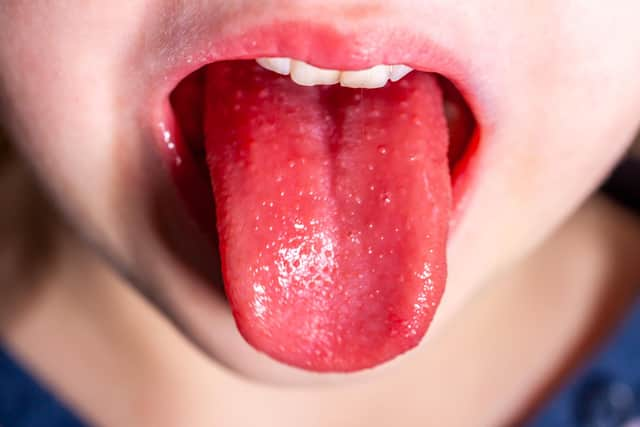Six confirmed cases of highly contagious scarlet fever in Northampton, making it 54th highest local authority for the infection
and live on Freeview channel 276
Northampton currently has six cases of the highly contagious scarlet fever, making it the 54th highest region for the infection across England and Wales.
It is caused by the Strep A bacteria, and symptoms include a sandpapery skin rash and a white coating on the tongue.
Advertisement
Hide AdAdvertisement
Hide AdScarlet fever used to be a very serious infection, but thanks to antibiotics most cases are now mild and easily treated.


Though on very rare occasions, the bacteria that causes scarlet fever – Strep A – can get into the bloodstream and cause a potentially deadly infection called invasive Group A Strep (iGAS).
Parents are urged to seek medical advice if their child is getting worse, has a fever, is eating much less than normal, or is very tired or irritable.
In England and Wales, the UK Health Security Agency publishes the number of scarlet fever cases reported in every local authority area.
Advertisement
Hide AdAdvertisement
Hide AdFigures for the most recent week, up to December 4, show the Isle of Wight had the most cases, at 32. This was followed by Leeds, with 22 cases, and Allerdale in Cumbria, with 20 cases.
East Northamptonshire saw just one case during the week ending December 4, and South Northamptonshire saw 2.
Dr Colin Brown, deputy director of the UK Health Security Agency said: “We are seeing a higher number of cases of Group A strep this year than usual.
“The bacteria usually causes a mild infection producing sore throats or scarlet fever that can be easily treated with antibiotics. In very rare circumstances, this bacteria can get into the bloodstream and cause serious illness – called invasive Group A strep.
Advertisement
Hide AdAdvertisement
Hide Ad“This is still uncommon, however, it is important that parents are on the lookout for symptoms and see a doctor as quickly as possible so their child can be treated and we can stop the infection becoming serious.
“Make sure you talk to a health professional if your child is showing signs of deteriorating after a bout of scarlet fever, a sore throat, or a respiratory infection.”
Rates of scarlet fever are above average this year, but are not at record highs. 2018 saw particularly high levels, with nearly 32,000 cases reported across England and Wales that year.
So far in 2022, just over 23,000 cases have been reported to the authorities. The same period in 2018 saw 30,600 reports.
Scarlet fever rates dipped considerably during the coronavirus pandemic, due to social distancing restrictions and increased hygiene precautions.
